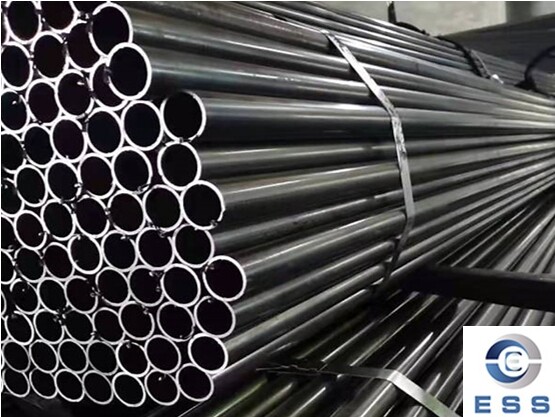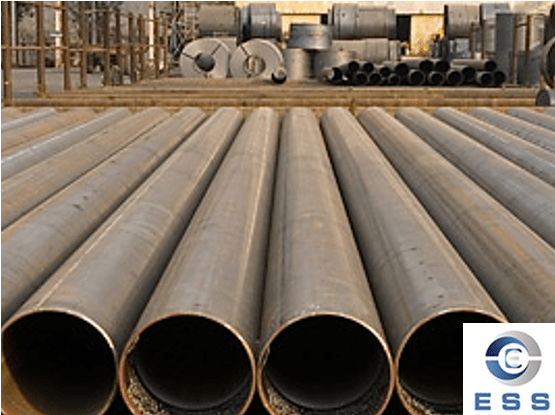
Processing Technology for Stainless Steel Precision Tubes
The processing technology for stainless
steel precision
tube is relatively complicated and mainly includes the following
steps:
1. Raw material preparation
Select high-quality stainless steel
billets, usually hot-rolled or cold-rolled stainless steel coils. These billets
must undergo strict inspection to ensure that their chemical composition,
mechanical properties, etc. meet the processing requirements. The seamless
pipe is usually selected as the raw materials for stainless steel precision
tubes because their internal structure is uniform and can effectively improve
the strength and corrosion resistance of the pipes.
2. Cutting and blanking
According to the design requirements, use
plasma cutting, laser cutting or shearing machines and other equipment to cut
the billets into the required length. During the cutting process, pay attention
to controlling the cutting accuracy to avoid excessive errors. For pipes that
require high precision, such as hydraulic
tubes, cutting accuracy is particularly important.
3. Cold drawing or cold rolling
This is a key step in the processing of
stainless steel precision tubes. Compared with the carbon
steel pipe, cold processing of stainless steel precision tubes is more
difficult because of their higher material hardness and higher requirements for
equipment and processes.
Cold drawing is to use a special cold
drawing machine to draw the pipe multiple times at room temperature, so that
the diameter of the pipe is gradually reduced and the wall thickness is
gradually thinned, thereby improving the precision and surface quality of the
pipe. Cold rolling is to roll the pipe on the rolling mill, and the cold
processing of the pipe is achieved by adjusting the gap between the rollers and
the rolling speed.
4. Heat treatment
In order to improve the mechanical
properties and corrosion resistance of stainless steel precision tubes, heat
treatment is usually required. Common heat treatment processes include
annealing, normalizing, quenching, etc. Annealing can eliminate the processing
stress of the pipe and improve the plasticity and toughness of the pipe;
normalizing can refine the grains and improve the strength and hardness of the
pipe; quenching can improve the hardness and wear resistance of the pipe.
5. Finishing processing
Includes straightening, grinding, polishing
and other processes. Straightening can eliminate the bending and deformation of
the pipe during the processing process, so that the pipe maintains
straightness; grinding and polishing can remove burrs, scratches and other
defects on the surface of the pipe, and improve the surface quality and finish
of the pipe.
6. Quality inspection
The processed stainless steel precision
tube is strictly inspected for quality, including dimensional accuracy, shape
accuracy, surface quality, mechanical properties and other aspects. Only tubes
that meet the standard requirements can be shipped.
The processing technology of stainless
steel precision tube mainly includes the following:
1. Hot rolling process
The steel billet is heated to a high
temperature and rolled into a tube of the required shape and size through a
rolling mill.
This process has high production efficiency
and can obtain tubes with larger diameters, but the accuracy is relatively low.
2. Cold rolling process
It is further processed on the basis of
hot-rolled tubes. The hot-rolled tubes are pickled, annealed and then subjected
to multiple cold rolling processes to significantly improve the dimensional
accuracy and surface quality of the tubes.
The cold rolling process can produce
thinner and more precise stainless steel precision tubes, but the processing
cost is high.
3. Cold drawing process
The solid bar or hollow tube is pulled out
of the mold through a special tube drawing equipment to reduce its diameter and
increase its length.
The cold drawing process can obtain
high-precision tubes with good surface quality, but the raw material quality
requirements of the pipes are high.
4. Welding process
For some stainless steel precision tubes
with long lengths or special shapes, welding process can be used. Common
welding methods include argon arc welding, laser welding, etc.
The welding process requires strict control
of welding parameters to ensure the quality and sealing of the weld of the welded
pipe.
5. Surface treatment process
In order to improve the corrosion
resistance and aesthetics of stainless steel precision tubes, surface treatment
is usually required. Common surface treatment processes include polishing, wire
drawing, sand blasting, etc.
Polishing can make the surface of the pipe
smooth as a mirror; wire drawing can form fine lines on the surface; sand
blasting can remove the oxide layer on the surface and increase the surface
roughness.
Summary
In short, the processing technology of
stainless steel precision tubes requires fine processing and strict control of
multiple processes to ensure that the quality and performance of the pipes meet
the requirements. Different processing technologies and equipment selections
will affect the processing efficiency and quality of the pipes, so in actual
production, reasonable selection and optimization are required according to
specific circumstances. The processing techniques of stainless steel precision
tubes have their own characteristics. In actual production, according to
different needs and product requirements, appropriate processing techniques
will be selected or multiple techniques will be combined to produce
high-quality stainless steel precision tubes.
Read more: What Are The Classifications of Stainless Steel Precision Tubes? or What Is A Stainless Steel Precision Tube?













 Eastern Steel Manufacturing Co.,Ltd not only improve product production and sales services, but also provide additional value-added services. As long as you need, we can complete your specific needs together.
Eastern Steel Manufacturing Co.,Ltd not only improve product production and sales services, but also provide additional value-added services. As long as you need, we can complete your specific needs together.










